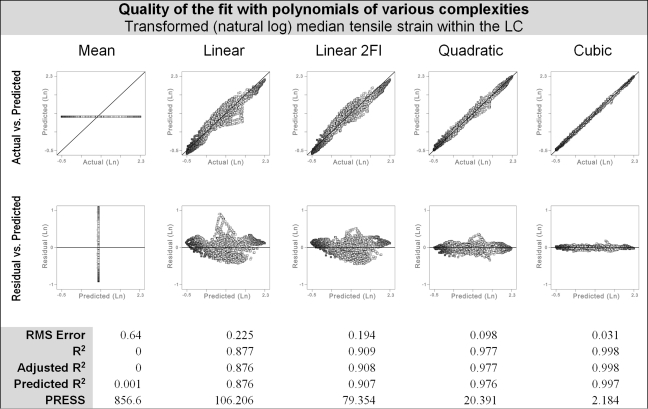Figure 4.
Multivariate regression was used to fit polynomials of various complexities to the predicted ONH response to increases in IOP in 2092 FE models. Obtaining a function suitable as a surrogate of the FE models required a close fit to the responses. The best fits were obtained with a cubic polynomial, followed by a quadratic polynomial, a linear polynomial with two-factor interactions (Linear 2FI), linear polynomial, and finally the mean (the simplest model possible). We show here the tensile strain within the LC as an example. All responses had a similar behavior. These results show that, at the points evaluated, cubic polynomials represent the FE models with <0.1% error. See Table 2 for measures of the quality of fit of cubic polynomials to all 12 responses analyzed. Shown are standard actual versus predicted (top row) and residual versus predicted (second row) plots. The fits were improved by first transforming the responses by a natural log. PRESS, predicted residual sum of squares; RMS, root mean square.

